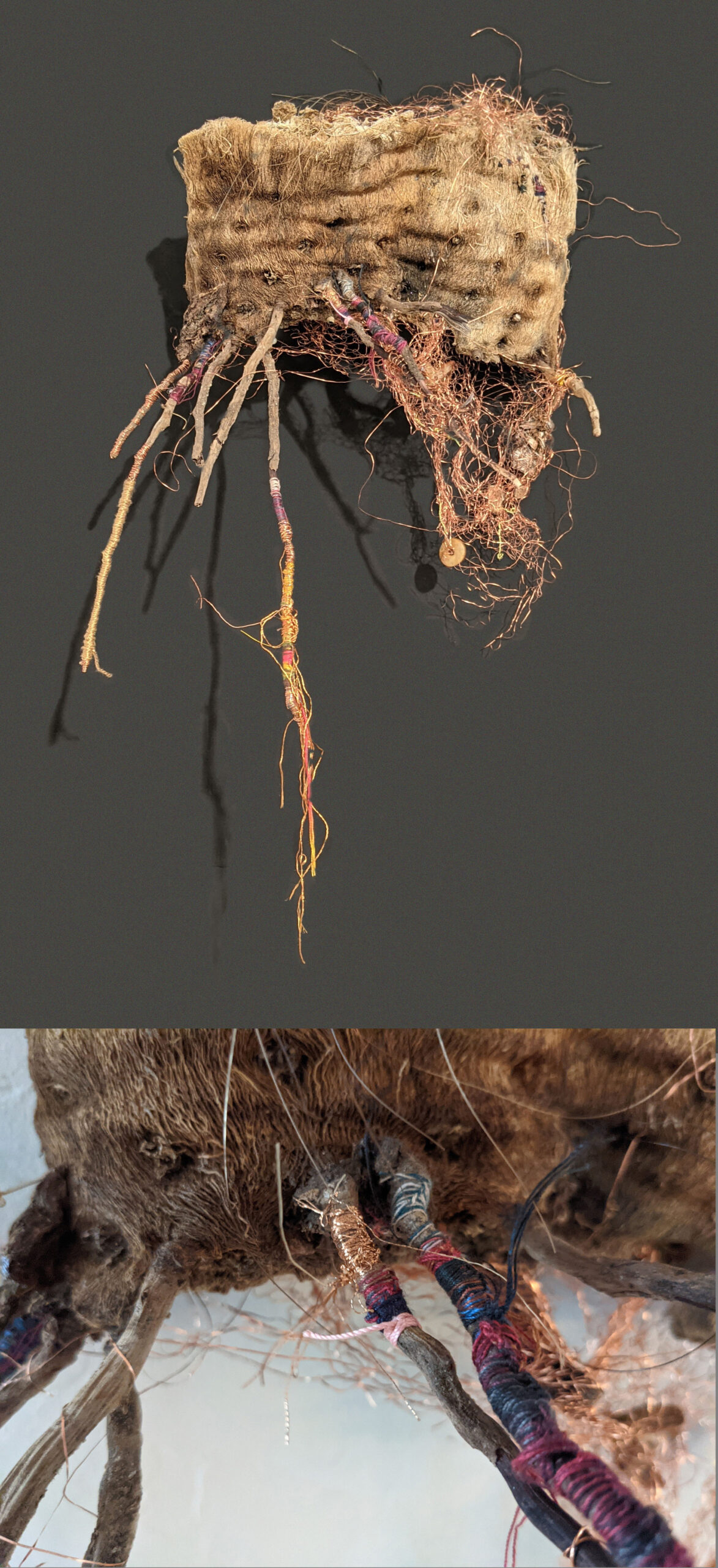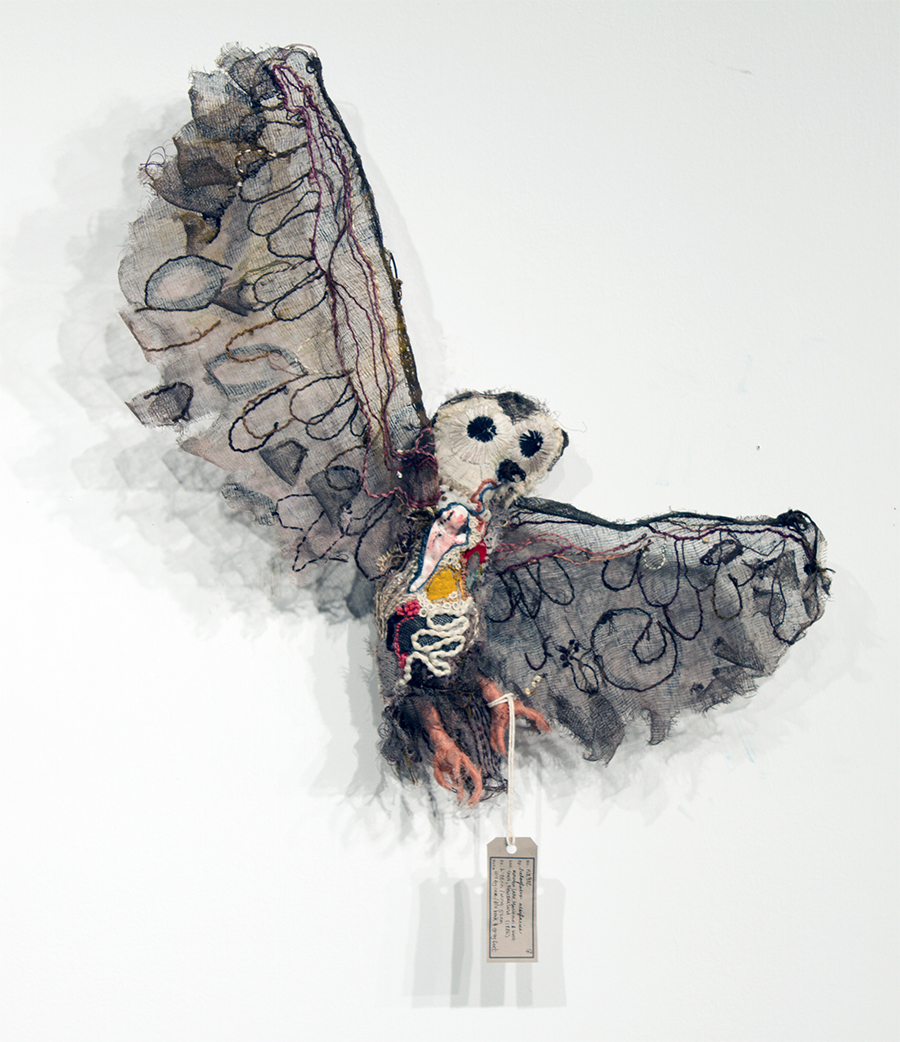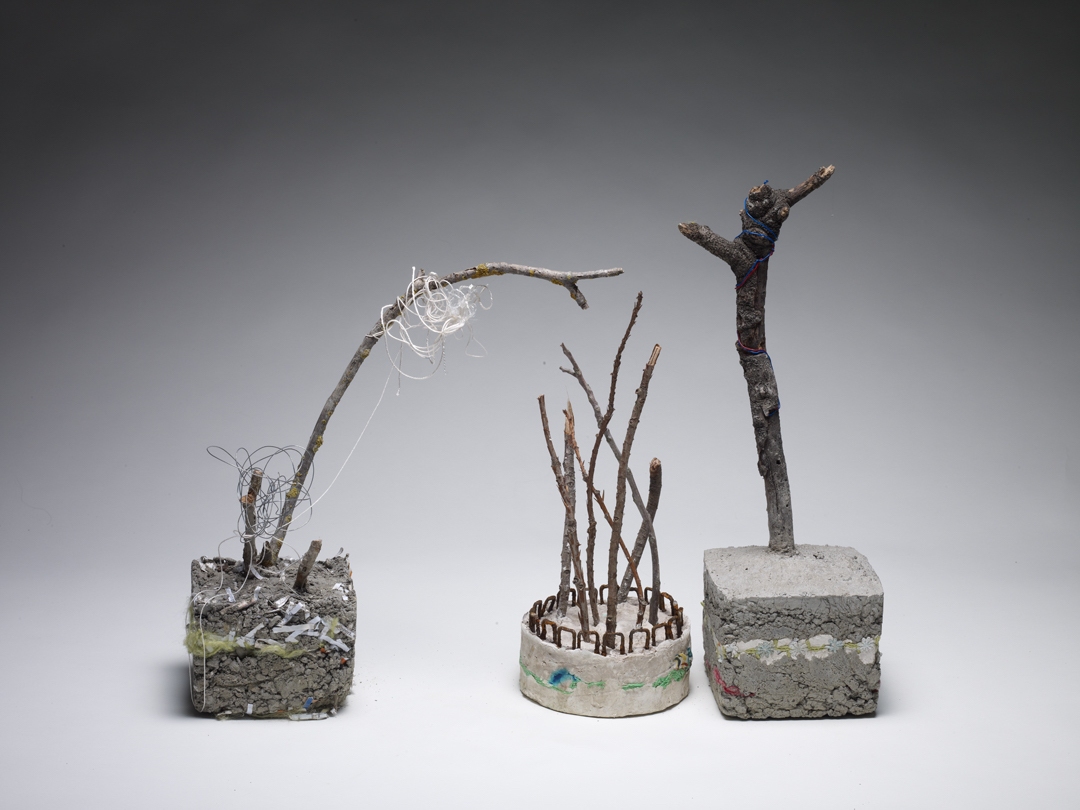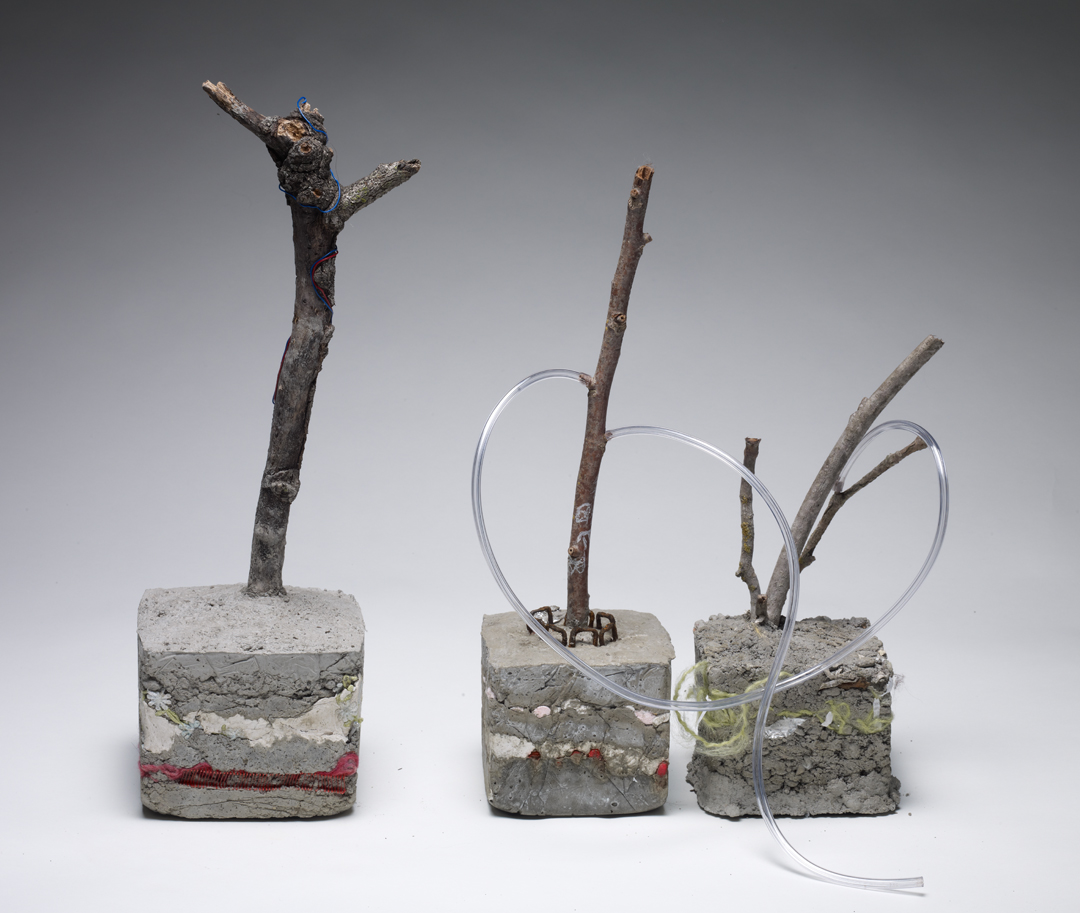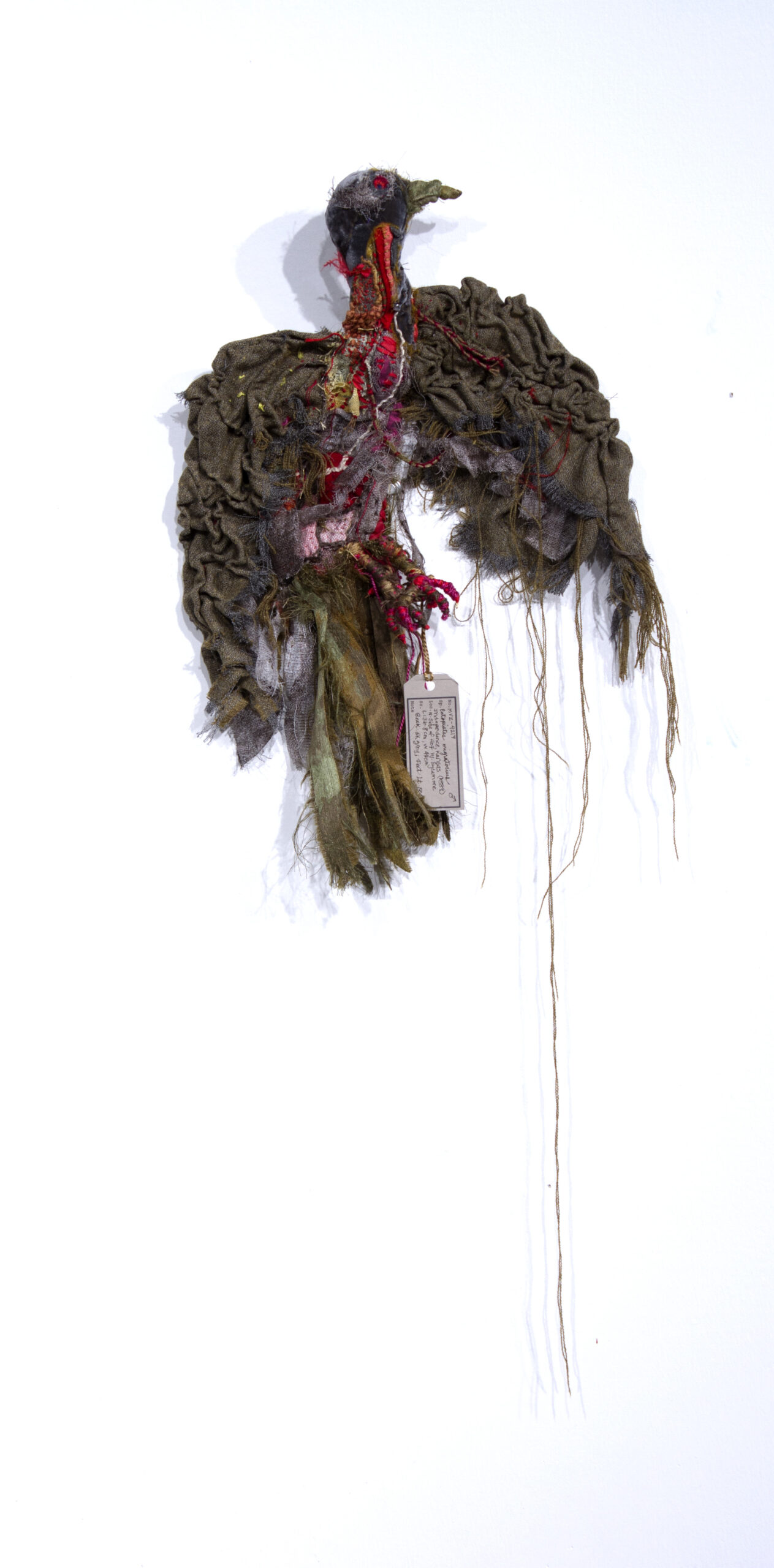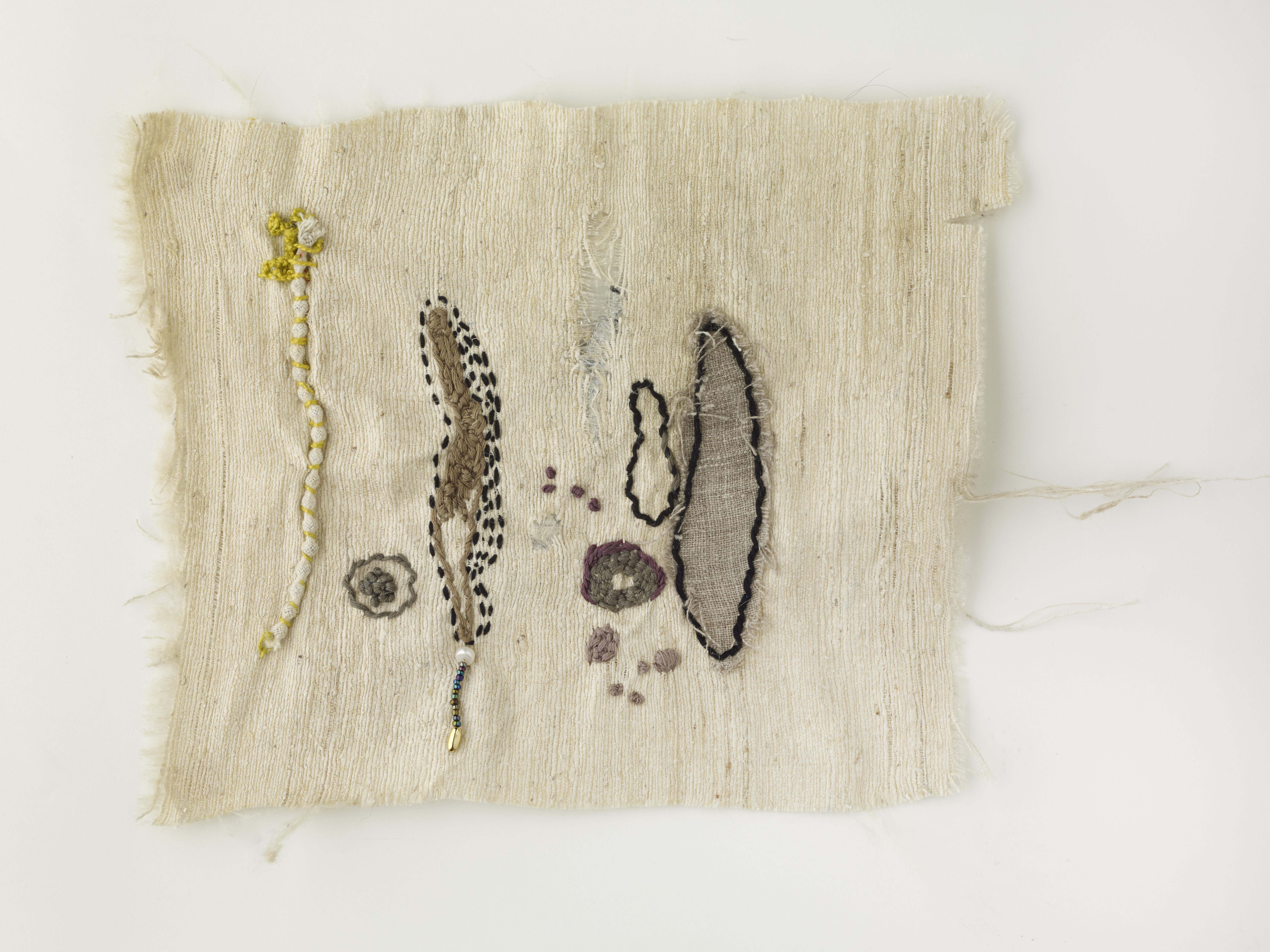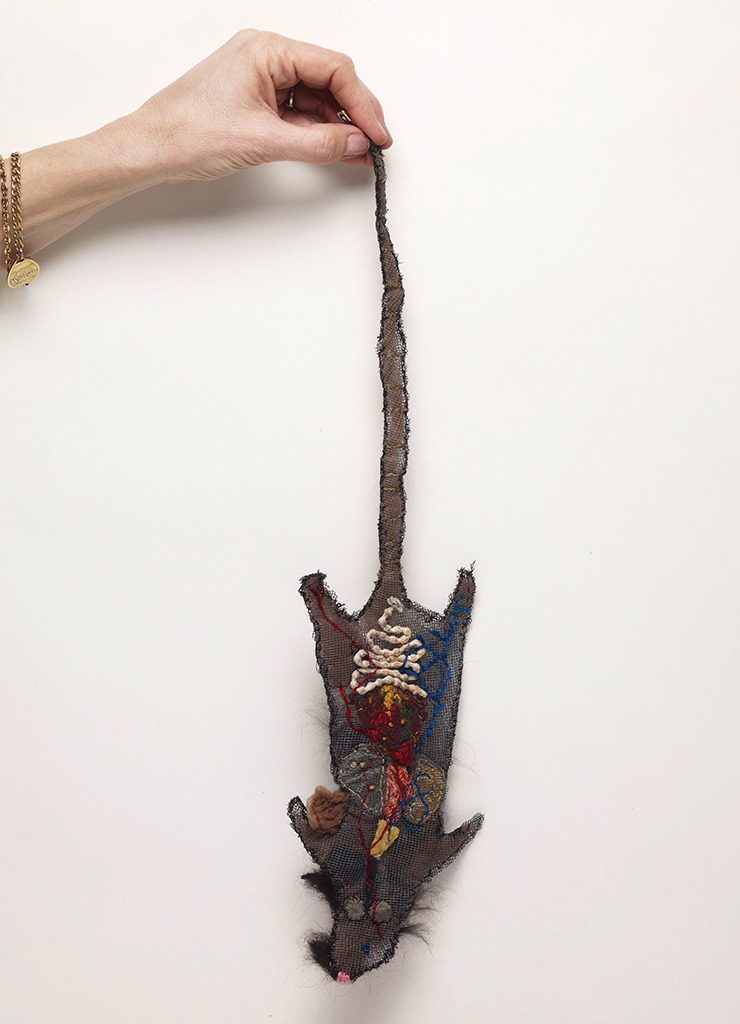Julia Feldman
Industrial captive, 2021
A found dead agave root further entangled by my hand. Copper wire, silk and cotton threads, embroidery, stabilized with silk fabric. 19 x 13 x 9 in
Constructed on the found root of an agave plant. The roots are wrapped in metal wire and threads of silk, cotton, and metal. Tangled in the root are found objects including a dried seed pod, pieces of bark, and beads; and a net of fine copper. The detritus of a throw-away society.
Julia Feldman
Turquoise-throated Puffleg Hummingbird, extinct, 2021, Julia Feldman, 2021
Mixed media, hand embroidery, found wood, metal, silk, cotton, other fibers 6.5 x 8 x 2.5 in
The habitat in Ecuador has been almost completely destroyed. There was an unconfirmed sighting of this tiny bird in 1976. It is treated as critically endangered and possibly extinct because further searches have not found any of the species.
Julia Feldman
44.6 degrees Fahrenheit (7 degrees Celsius). A Consequence of Redlining, 2021
Repurposed wool, linen, silk, ribbon, hand embroidery 5 x 37 x 2in
"Redlining" - the term for refusals to give loans or insurance to entire groups of people based on racially-motivated concerns for safety and investments. Redlining resulted in densely packed urban neighborhoods for Black residents, while White residents were allowed to purchase and live in more spacious neighborhoods. These densely-packed urban environments also have fewer green areas and more man-made materials that absorb heat, leading to "urban heat islands." In these locations - to this day primarily populated by people of color and people with low socioeconomic status - surface air temperatures have been measured up to 44.6F/7C higher than nearby neighborhoods populated by primarily White residents and people of higher socioeconomic status.
Julia Feldman
Laughing Owl, Extinct 1914, 2021
Mixed media, tarlatan scrim, found objects and upcyled fabric, threads 23 x 19 x 5 in
The species fate was tied to the clearance of its habitat in New Zealand to create farms, and to newly introduced predators. Stoats, ferrets, and cats proved to be the largest threat to this beautiful owls. The laughing owl was known for its shrieks which echoed of laughter.
Julia Feldman
The future of trees, visiting the nursery, 2014
Found objects (plastic waste, branches, metal) imbedded in cement) Varies approx 18 x 25"
Gardens and parks will be made from detritus when nothing will grow from contaminated ground.
Julia Feldman
The future of trees, 2014
Found branches, medical tubing, plastic waste, cement variable, 18 x 20 x 6"
Julia Feldman
Passenger pigeon, extinct, 2020
Painted and dyed cotton & silk, cotton & silk embroidery threads, repurposed antique upholstery fabric, found objects 30 x 18 x 1.5"
Passenger pigeons, Ectopistes migratorius, in 1850 were the most abundant bird in North America By the mid-1890s, wild flock sizes numbered in the dozens rather than the hundreds of millions. The breed was hunted out of existence, victimized by the paradox that no amount of hunting could endanger a bird so abundant.
Julia Feldman
The Destruction of Macrocystis pyrifera (Giant Kelp), 2018
Silk, linen, pearl, beads, cotton and silk threads; hand embroidered 10 x 8”
Julia Feldman
The aftermath of global warming on the Norwegian Roof Rat (Rattus norvegicus), 2014
Screen mesh, drapery weights, embroidery thread, dog hair 7 x 21”
